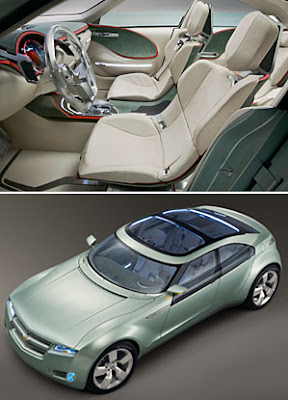
The concept car Chevy Volt had some tough competition: Jaguar's C-XF, Ford's Airstream and the Toyota FT-HS hybrid sports car were all impressive, but none of them are likely to have the impact of the Chevy Volt. Here's why:
Design
While most concepts look like they belong on another planet, the Chevy Volt's styling is futuristic but achievable. Its low stance and light, airy interior give it a sporty flavor that actually looks fun to drive. Many of the materials are prototypes, but you can easily imagine this car on the road in your lifetime.
Technology
Using a technology dubbed "E-Flex," the Volt is a true electric vehicle that can go up to 40 miles on a charge and can be "refilled" from an existing power grid (i.e., the plug in your garage). Consider that 78 percent of Americans have a daily commute of 40 miles or less, and GM claims a majority of Volt owners will never use fuel again. Bravo.
GM went a step further and added an additional 3-cylinder turbo engine that kicks in as a superefficient generator to recharge the batteries when they get low. So if you forget to charge it or go away for the weekend, you'll still get 50 mpg with the engine converting gas to electricity.
The genius behind the Volt is that the engine can be altered to meet the global market. For example, the battery and electric motor can be paired with a turbo-diesel that runs on biodiesel in Europe, an engine that runs on pure ethanol in Brazil, or an engine that runs on E85 in the United States.
Sound too good to be true? Well, it's still a concept car. The battery technology doesn't exist, but we don't think GM would be playing these cards if they didn't have something in their deck.
Impact
Potentially staggering. The Volt is the first significant salvo fired from an American car company in the race for the next generation of propulsion. Sure, hydrogen fuel cells may be the future, but it's a distant future. The technology in the Volt is attainable, flexible and sellable.
Chevrolet Volt